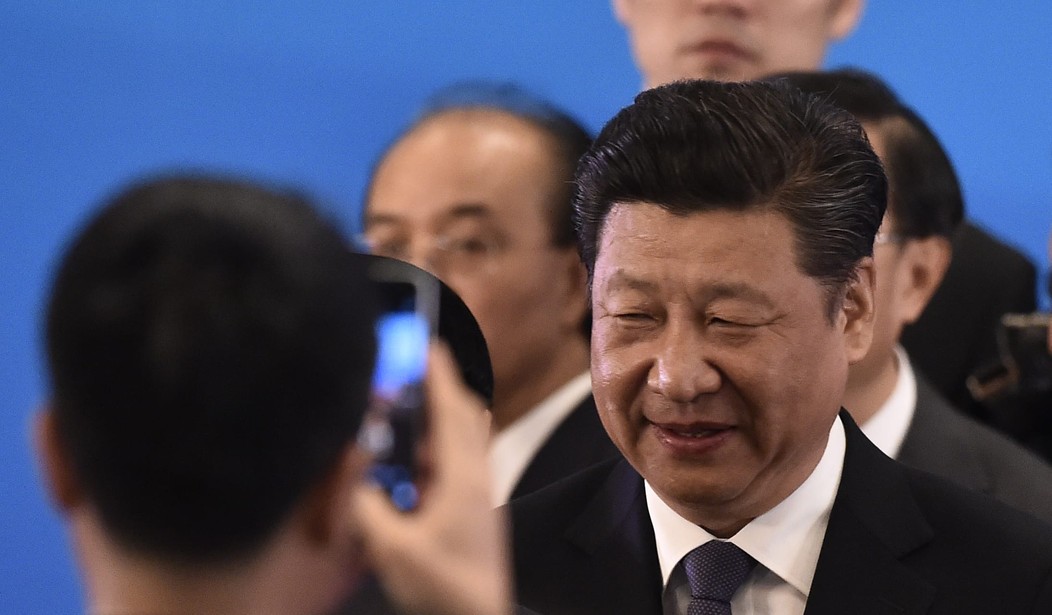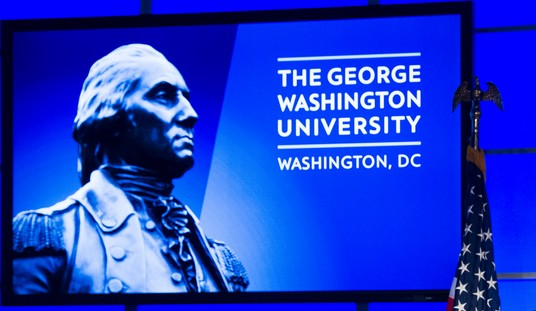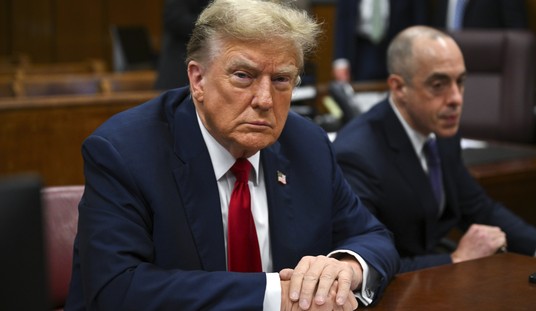Back in 2002, when I ran the credit strategy team at Credit Suisse, I invited one of America’s most prominent Reagan-era supply-siders to speak to our research team. The sickening decline of American industrial employment was just beginning, but no-one seemed to care. The famous economist (whose name I suppress because he is a friend) suggested that the United States didn’t need ANY manufacturing employment at all. We would do the design and other folks would do the dirty work. Boy, did we need Donald Trump back then. Instead, we had George W. Bush. The U.S. borrowed trillions of dollars from foreigners against dodgy home equity loans to finance trillions of dollars worth of futile war in Iraq and Afghanistan.
America’s trade deficit is like a giant benign tumor: It’s troublesome and ultimately dangerous, but it’s a symptom, not the cause, of the underlying problem. Cut it out with a rusty scalpel and the patient will bleed to death. Trump is entirely right to address the problem, but some of the advice he is getting may have disastrous consequences. For the time being, Trump is in Navarro-Navarro Land.
The United States has legitimate complaints against Chinese trade and technology transfer practice, but the Trump administration’s ineptitude threatens to turn what should be a tough negotiation into a trade war.
As I wrote in Asia Times today, Trump brings to mind the old joke about the ethnic Godfather: He’s making China an offer it can’t understand: “The fact that China often plays dirty has very little to do with the magnitude of the US balance on goods and services, or current account. Americans save less than the citizens of any other industrial country. The less they save, the more they buy from foreign countries. Countries as a whole save by selling goods and services to other countries and saving the difference. Countries with rapidly-aging populations (like all of East Asia as well as Germany) tend to save more, and do so by exporting more than they import.”
U.S. savings as a share of household disposable income have plunged to barely 2%, around the all-time low. That means that the U.S. trade deficit will rise, especially because the U.S. has a massive deficit financing requirement in part due to Trump’s tax cuts.

Germany, the world’s biggest exporter after China, displays exactly the opposite profile. During the past twenty years German households have saved more, which means that Germany exports more and saves the proceeds while buying less from other countries.
The Nobel Laureate Robert Mundell, the father of supply-side economics, long ago observed that countries with rapidly aging populations save more than they can invest at home, so they save the proceeds of their exports and invest them in countries with more young people. Germany and China have rapidly aging populations because they have so few children, and need to save more.
Americans should save more than we do, but we don’t because the world continues to lend the U.S. government money at less than 3% for 10-year Treasury notes. During the 2000s we went head-over-heels into debt to buy houses, financed by cheap foreign money. Now we’re running a nearly trillion-dollar budget deficit, because Congress thinks it can spend borrowed money in order to buy votes.
American households will save about $400 billion during 2018 at present rates; even if they put every penny of their savings into Treasury securities, the U.S. government would still have to raise another $600 billion or so. The Federal Reserve has stopped buying U.S. government bonds through so-called quantitative easing, and commercial banks have stopped buying government bonds because their own cost of funds is almost as high as the yield on five-year Treasury securities.
Corporations might buy some government bonds, but not enough to make a difference. So the U.S. will have to borrow several hundred billion dollars from foreigners. Foreigners now hold about $6.2 trillion of U.S. Treasury securities, and the total will have to rise during 2018 and 2019.
Where do foreigners get the dollars with which to buy U.S. Treasury securities? By selling goods and services to the U.S.
Apparently, no-one has explained to the U.S. president that he can have one of two things, but not both: a budget that cuts taxes while maintaining entitlement spending, and a lower trade deficit. There is, of course, a way to lower the trade deficit (but not the budget deficit), and that is to have a recession. If Americans lose income and stop investing they will buy less from foreigners and the trade deficit will fall. That’s not what Trump wants, of course, although he might get it in the aftermath of a trade war.
Because the dollar is the world’s reserve currency, America is able to borrow in order to spend. The U.S. Congress apparently believes that America’s borrowing power is infinite because it continues to spend and to program future spending that depends on foreign borrowing – which is the same as saying that it depends on increasing U.S. trade deficits.
If the U.S. administration demands that the rest of the world (starting with China) shrink its trade surplus with the United States, it will also hasten the arrival of the day when the U.S. no longer can borrow at low interest rates to pay for entitlement programs. Americans will wake up and find themselves poorer and less secure, the way the British did after the Sterling crises of the 1960s.
I have argued on several occasions in this space and in articles for the Journal of American Affairs that the only path out of the savings and trade-deficit trap lies through innovation. America is (or at least used to be) far better than China at innovation. America’s complaints about Chinese theft of intellectual property are justified, but they amount to closing the barn door after the dragon has left. In 2003, for example, Huawei admitted to stealing code from Cisco. Today Huawei is manufacturing chips for mobile phones that compete with Qualcomm’s. Huawei’s R&D budget has jumped to $14 billion in 2017 from only $4 billion in 2011.
If China takes down its trade barriers, Caterpillar will sell a few more backhoes, Cummins will sell a few more engines, and a few Chinese even might buy an American car. Where is the industrial capacity to export, say, another $100 billion to China? Since 2010, the S&P 500 companies have spent an aggregate of $630 billion on capital expenditures (of which the biggest share is energy). That’s mainly replacement, not expansion. During the same period the S&P 500 returned $1 trillion to shareholders in the form of dividends and stock buybacks. Why don’t U.S. companies invest in their existing businesses, either in the U.S. or overseas? The trade-deficit tumor is a symptom of a deeper problem, America’s failure to invest. American companies for the most part are staid monopolies happy to maintain their existing markets with a global supply chain that provides cheap components.
What America has to fear most is not Chinese theft of existing technologies, but Chinese invention and commercialization of new technologies. If China surpasses America in the deployment of new technologies, no protection in the world will save the United States from decline.
Last January, Alibaba founder Jack Ma had some advice for the U.S.:
“It’s not that other countries steal jobs from you guys,” Ma said. “It’s your strategy. Distribute the money and things in a proper way.”He said the U.S. has wasted over $14 trillion in fighting wars over the past 30 years rather than investing in infrastructure at home.
To be sure, Ma is not the only critic of the costly U.S. policies of waging war against terrorism and other enemies outside the homeland. Still, Ma said this was the reason America’s economic growth had weakened, not China’s supposed theft of jobs.
In fact, Ma called outsourcing a “wonderful” and “perfect” strategy.
“The American multinational companies made millions and millions of dollars from globalization,” Ma said. “The past 30 years, IBM, Cisco, Microsoft, they’ve made tens of millions — the profits they’ve made are much more than the four Chinese banks put together. … But where did the money go?”
He said the U.S. is not distributing, or investing, its money properly, and that’s why many people in the country feel wracked with economic anxiety. He said too much money flows to Wall Street and Silicon Valley. Instead, the country should be helping the Midwest, and Americans “not good in schooling,” too.
Of course, Ma leaves out the fact that the Chinese government has its thumb on the scale, in the form of coerced technology transfer, subsidies to key industries through cut-rate government loans, IP theft, and so forth. China’s hands aren’t clean. But I thought about Jack Ma’s observation this morning as I made my way to work on the Q train, whose billion-dollar-per-mile expansion to my Manhattan neighborhood was the single most expensive subway investment in history. The brand-new escalators at my station had broken down again–in fact, they break down roughly half the time. I can’t remember the last time I saw a broken escalator in a major Chinese city.










Join the conversation as a VIP Member